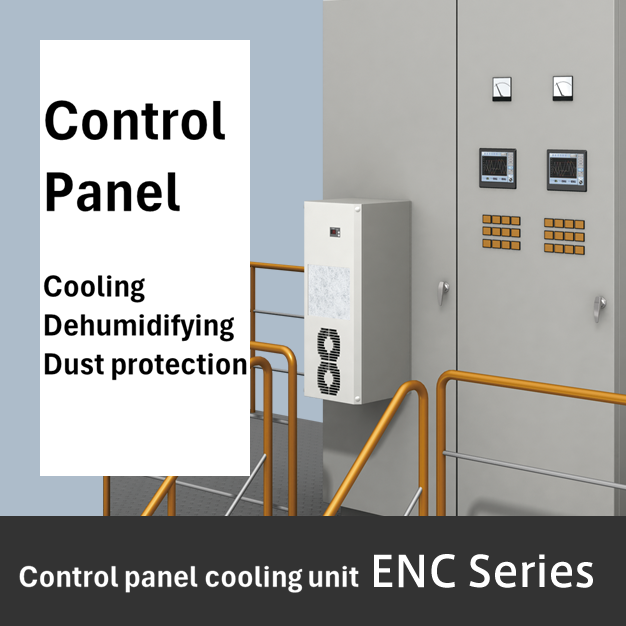Important points to note when using ventilation fans in panel
The air volume of ventilation fans used in panel, etc. can be calculated using the following formula.
Note) Heat output: W, ⊿t: °C (basic 20°C), surface area: m2, heat transfer coefficient: W/m2・K, 1/20: constant
Note: From Oriental Motor Co., Ltd. technical information
https://www.orientalmotor.co.jp/tech/reference/select_fan02/
The standard temperature of panel after installing the ventilation fan is ambient temperature plus 20°C.
When selecting and installing a ventilation fan, you should pay attention to the following:
Calculate the necessary and sufficient ventilation air volume
If you select a ventilation fan based on experience or without calculating the required air volume because you do not want to increase the size or number of ventilation fans, the required ventilation air volume may not be met and sufficient heat may not be dissipated.
Ensure sufficient opening area for the ventilation holes
If the opening area of the ventilation hole is too small, the wind speed will be high. Since pressure loss increases in proportion to the square of the wind speed, the smaller the opening area, the more difficult it is for the wind to escape, reducing the ventilation air volume and the heat dissipation effect.
Prevents filter clogging
Normally, when installing a ventilation fan, filter is attached to the vent. filter can become clogging with dust and oil mist, which increases the pressure loss of filter itself and causes a decrease in ventilation airflow. If regular filter maintenance is neglected, ventilation airflow will decrease, leading to an increase in the temperature inside the panel.
Oil enters through the intake and exhaust ports of fans, etc.

Reduced heat dissipation effect due to inverters being installed adjacent to each other
When installing an inverter inside panel, it is recommended to leave a certain amount of space above, below, left and right to ensure the inverter's air-cooled heat dissipation effect. For example, it is recommended to leave at least 5 to 10 cm of space on the left and right, and at least 15 cm of space above and below. However, when installing multiple inverters, they are sometimes installed with almost no space between them. In this case, the inverter's air-cooled heat dissipation effect is reduced, causing the temperature to rise.
Inverter exhaust heat short circuit
When multiple medium- to large-sized inverters are installed on the top level of panel, the exhaust air from adjacent inverters collides with each other, preventing the circulation of exhaust heat, and heat builds up near the inverters. This can cause a short circuit, drawing in high-temperature exhaust air, which can lead to abnormal temperatures in the inverters.


